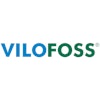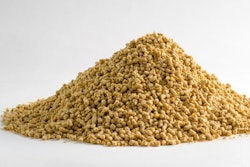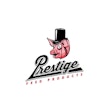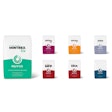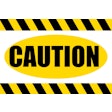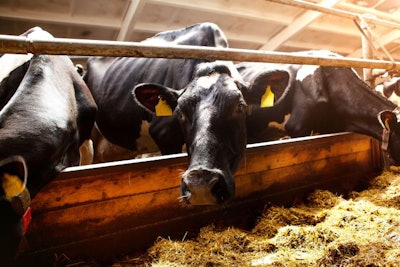
Soaring raw materials prices lead to rising production costs, restricting further growth and forcing switch to rice
The Japanese animal feed sector is slowly developing this year although the ever-growing prices for raw materials and depreciation of the yen put significant pressure on the industry and its major players.
According to NHK, a Japanese public broadcaster, due to the depreciation of the yen and Russia’s invasion of Ukraine, the price of animal feed in Japan, which is largely dependent on imports, has soared in recent months, while the growth is ongoing. That has resulted in bankruptcies of many of Japanese farmers (especially dairy farmers) and forced the local state to consider the provision of additional support measures to the country’s agricultural sector. In addition, the growth of feed producers led to a sharp rise of prices for finished livestock products.
The price of compound feed in Japan is as twice as high as in the United States. Dairy farmers who don’t have enough grassland are forced to buy even roughage (grass, straw, etc.) from abroad.
According to the Japanese Ministry of Agriculture, Forestry and Fisheries (MAFF) – a state agency responsible for the development of agricultural and animal feed sector in Japan – 87% of grain feed eaten by cattle in Japan is imported from overseas, being mainly accounted for American corn.
In 2022, the production of animal feed in Japan slightly exceeded 24 million tonnes (24.23 million tons), of which about 20% account for compound feed for beef cattle. For the past two decades, the annual output of animal feed production in the country remains practically unchanged.
This is confirmed by the data of MAFF, according to which the production of animal feed in Japan is stable, around 24 million metric tons (MT) for the past 20 years.
Companies look to grow in Japan
In the meantime, despite its maturity and lack of a big potential for a further growth, the Japanese market has been traditionally within the sphere of interests of global majors.
Satomi Nagamoto, an official spokesperson of Trouw Nutrition Japan in an exclusive interview has confirmed the company considers the Japanese market as one of priority for its growth.
“Trouw Nutrition, the livestock sector of Nutreco, has launched its business in Japan just before the COVID-19 hit, and we are still on the early stage,” Nagamoto said. “However, we plan to expand our business in Japan, and now work on to build relationships with stakeholders.”
Nagamoto believes the volatility of global commodity markets and soaring feed costs will affect the growth of the feed sector in Japan this year.
In the meantime, a further expansion in the Japanese market is also considered by another global major – Cargill.
Lei Yan, a spokesperson from Cargill Animal Nutrition, said the company plans to retain its leading positions in the Japanese animal feed market this year, through the launch of new products.
“For the Japanese feed market, Cargill is focused on providing tailored products and solutions to maximize animal productivity through nutrition and digestive health and science-based feed additives,” Yan said. “We are dedicated to understanding the key aspects of gut health by exploring the power of pre-, pro- and post-biotics, as well as phytogenics, mycotoxin binders and enzymes – keeping animals healthy right from the start.”
According to Yan, the level demand for animal feed in Japan is 24 million to 25 million tons per year, with poultry and ruminant feed playing a major role in this market.
“We anticipate volume to remain neutral based on historical demand over the last three years,” Yan said.
Compound feed costs up 50% in 2 years
As of December 2022, the price of mixed compound feed in Japan has risen by more than 50% in two years, to about JPY100,000 (US$747) per ton. That became mainly due to the rise in prices for corn and other raw materials. While in recent months the growth of prices has slowed down, the current prices remain high, especially for imported raw materials.
In the meantime, due to this, the Japanese government is creating conditions for the reduction of import dependence in the country’s animal feed sector and increasing its self-sufficient rate. In addition, the reduction of production costs is expected to be another target for the industry in years to come.
According to experts of MAFF, given that most of the livestock feed in the Japanese market is dependent on imported grains, the production of feed rice should be promoted. For this purpose, the government plans to increase the volume of support and provide additional subsidies for the production of feed rice within the country.
In general, the use of rice for feed is increasing among livestock farmers in Japan as it has almost the same nutritional value as corn, and the planting of rice for feed is on the rise.
In terms of structure of production, corn has traditionally been the main component of animal feed in Japan, (with the share being varied in the range of 45% to 48%). As Japan experiences a lack of its own production, the majority of it is imported to the country from abroad.
While the Japanese government has tried to incentivize its production in recent years, most local farmers are still reluctant to begin its commercial growing, which is mainly due to the long cultivation period. Due to this, their hopes are still placed on imports, with annual volume to the country estimated at 15 million to 16 million tonnes.
Demand for other raw materials growing
In addition to corn and rice, the demand for other raw materials used in the Japanese animal feed sector is also growing. Among them is soybean meal. The demand for GM-free soybean meal among Japanese animal feed producers has significantly increased in recent years, which has resulted in the increase of imports.
In general, Japan’s animal feed self-sufficiency rate is estimated at 25%, virtually unchanged for the past 10 years. The government has set a goal of raising the feed self-sufficiency rate to 34% by 2030, and has announced that it will raise the roughage self-sufficiency rate from 77% to 100% and concentrate feed from 12% to 15%.
For the majority of leading Japanese animal feed producers, the reduction of production costs and improvement of production efficiency will be among the priority targets for this year.
The government also plans to provide additional support for producers this year. As part of this, each prefecture and some municipalities have come up with measures to partially support the recently established feed funds as a countermeasure against soaring feed prices.
Switch to domestically produced animal feed
In order to reduce costs, most leading Japanese meat and food producers are forced to switch on the use of domestic animal feed.
For example, Nippon Meat Packers Inc., the Japanese food processing conglomerate, has recently said it will sell chicken and pork produced using domestically produced brown rice and wheat.
In general, Nippon as well as other leading Japanese meat producers, plan to switch to the use of feed made of domestic ingredients this year to reduce production costs.
According to the company, the price of feed used in meat production has risen due to factors such as the weak yen and the war in Ukraine, putting pressure on Nippon Ham’s earnings.
“Currently, even if we switch to feed that uses domestically produced ingredients, the price will not drop significantly,” said Tetsuhiro Kito, vice president of the company, in an interview with the Japanese media.

